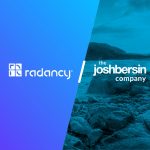Hybrid working has become central to the modern workplace. What began as a reactive measure to the global pandemic has evolved into a sustainable working model that many companies and employees now embrace. But when did this change truly take root, and what does the future of hybrid working look like?
A Look Back: When Did People Change to Hybrid Working?
The pandemic in 2020 was a turning point for workplaces worldwide. With offices shuttered, companies pivoted to remote work practically overnight. While this model initially served as a temporary solution, it quickly became apparent that many employees thrived in remote environments. Productivity remained steady and workers reported improved work-life balance. As a result, businesses began to explore long-term flexible work arrangements.
By 2021, hybrid working – a model combining in-office and remote work – gained traction. Employees valued the flexibility of working from home while still having opportunities for in-person collaboration. As of February 2023, 55% of remote-capable employees in the U.S. were working in a hybrid arrangement – a clear indication of the growing shift in workplace culture.
The Rise of Hybrid Models
In 2023, as companies sought to balance the benefits of remote work with the need for collaboration and culture-building, hybrid working models became the norm across industries. Major organizations adopted flexible policies, giving employees the autonomy to split their time between the office and home. This shift was supported by technology, as advancements in communication and collaboration tools made it easier to maintain productivity regardless of location.
Hybrid work has also had profound implications for office spaces. Businesses began reevaluating their real estate needs, often downsizing or redesigning spaces to support flexible work environments. Open floor plans, hot desking and collaborative zones became common features of hybrid workplaces.
Challenges of Hybrid Work
While hybrid working offers undeniable advantages, it is not without its challenges. Many companies are still grappling with implementing effective return-to-office (RTO) mandates. Resistance from employees who prefer remote work has created friction, with some citing concerns about work-life balance and long commutes.
Recruiters and managers face additional hurdles. For recruiters, finding talent willing to adhere to hybrid schedules can be challenging, particularly in industries where remote work was previously standard. Managers, on the other hand, need to navigate the complexities of managing distributed teams, ensuring equity in opportunities and workload across in-office and remote employees.
In addition to this, hybrid work has also significantly impacted downtowns and city centers. The loss of daily commuters has had ripple effects on local businesses that once relied on office workers for foot traffic. As a result, some organizations have felt increasing pressure to bring employees back to physical office spaces – whether to justify real estate investments or help support struggling urban economies. But instead of reverting entirely to traditional office work, companies are finding new ways to maintain engagement and connection in virtual spaces, including hybrid hiring events and online networking opportunities.
Flexible Work Is Here to Stay
Despite these challenges, flexibility remains a key priority for many workers and organizations alike. A report from January 2025 revealed that 83% of surveyed employees value work-life balance in their current or future jobs, even surpassing pay. This preference underscores the importance of maintaining hybrid models while addressing the challenges they bring.
For organizations, the key to success lies in adaptability. Companies that listen to employee feedback and refine their hybrid work policies are more likely to attract and retain top talent. Clear communication, simplified technology and a focus on outcomes rather than hours are critical components of effective hybrid working strategies.
Tips for Navigating Hybrid Work
Recruiters and managers can take several steps to make hybrid working a success:
- Prioritize Communication: Regular check-ins and clear communication channels help ensure that all team members feel connected regardless of their location.
- Invest in Technology: Equip employees with the tools they need to collaborate effectively. This includes video conferencing software, integrated platforms and secure remote access systems.
- Focus on Outcomes: Shift the emphasis from hours worked to results achieved. This approach fosters trust and allows employees to manage their time effectively.
- Redesign Office Spaces: Create flexible workspaces that cater to collaboration and individual focus. This ensures the office remains a valuable resource for employees.
- Promote Work-Life Balance: Encourage employees to set boundaries between work and personal time. This not only improves well-being but also boosts productivity.
- Clearly State Hybrid Options in Your EVP: Be transparent about the hybrid working options available in your organization. Clearly and consistently communicate how employees can balance remote and in-office work, and make this a core component of your Employee Value Proposition (EVP) to attract top talent seeking flexibility.
How Radancy Supports Hybrid Hiring
As hybrid work reshapes hiring, companies need smarter ways to connect with top talent. The Radancy Talent Acquisition Cloud makes this easier with Hiring Events, a feature that simplifies hosting both virtual and in-person hiring events – cutting costs and saving time. These events remove the need for travel while giving candidates a simple way to learn about an organization, meet recruiters and explore job opportunities – all from home.
Beyond hiring events, Radancy’s platform includes interview scheduling and workflow automation, making the process smoother for both recruiters and candidates. With a single, AI-powered platform, companies can create a seamless hiring experience that fits today’s hybrid work environment – maximizing efficiency and helping attract and retain top talent.
Radancy also provides data-driven intelligence, giving employers deeper insights into their talent pipeline. With engagement tracking, performance analytics and network benchmarks, this help companies measure ROI and make better hiring decisions.
By bringing Hiring Events, automation and data insights into one platform, Radancy helps organizations adapt to the changing workforce – making hiring faster, smarter and more cost-effective.
The Future of Hybrid Working
As we move further into 2025, the hybrid working model continues to evolve. Companies are experimenting with different schedules, such as four-day workweeks or flexible hours, to meet the diverse needs of their workforce. Additionally, advancements in AI and automation are simplifying workflows, making hybrid work more efficient than ever.
The hybrid work environment is also shaping the future of talent acquisition. Employers who embrace flexibility are better positioned to compete in global talent pools, as remote and hybrid work allows access to a broader range of candidates. For job seekers, hybrid roles offer the best of both worlds – the opportunity to work from home while still engaging in meaningful in-person interactions.
Conclusion
Hybrid working has changed the way we think about work, offering a new level of flexibility and freedom that benefits both employees and employers. While challenges remain, companies that invest in robust strategies and prioritize employee needs will thrive in this new era.
As hybrid work evolves, maintaining a strong employer brand and clearly communicating hybrid work options in your EVP are more important than ever. Virtual hiring events offer a powerful way to connect with top talent while delivering a seamless candidate experience. By leveraging the right tools, like the Radancy Talent Acquisition Cloud, you can consistently reinforce your brand, articulate your EVP effectively, and attract top talent across a global, flexible workforce.
Discover how can you optimize your talent acquisition strategy and maximize your results. Request a demo today.
- From Myth to Reality: How Talent Marketplaces Accelerate Internal Mobility and Smarter Hiring - December 5, 2025
- HR Trends 2026: What’s Next in People Strategy, Technology and Talent Management - November 20, 2025
- Fosway Report Recap: AI in Talent Acquisition 2025 - November 14, 2025
- 7 Ways AI is Shaping the Future of Work - November 13, 2025
- How Machine Learning Is Revolutionizing Recruitment: From Resume Screening to Retention - October 30, 2025
- Social Media AI Recruiting: How HR Teams Can Transform Hiring - October 2, 2025
- IT Staffing: How to Find and Keep TopTech Talent in a Competitive Market - September 25, 2025
- Cloud HR Software: Ending AI and App Overload with One Smart Talent Acquisition Platform - August 21, 2025
- From AI Search to Smart Agents: The Next Leap in Hiring Intelligence - August 7, 2025
- Predictive HR Analytics: How to Use AI and Data to Solve Workforce Challenges Before They Happen - July 31, 2025











